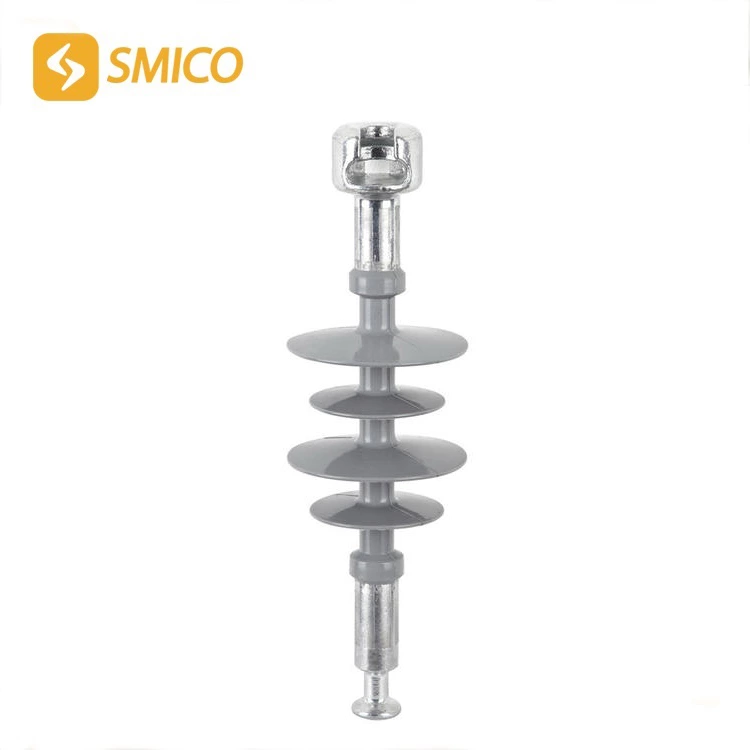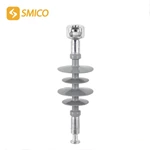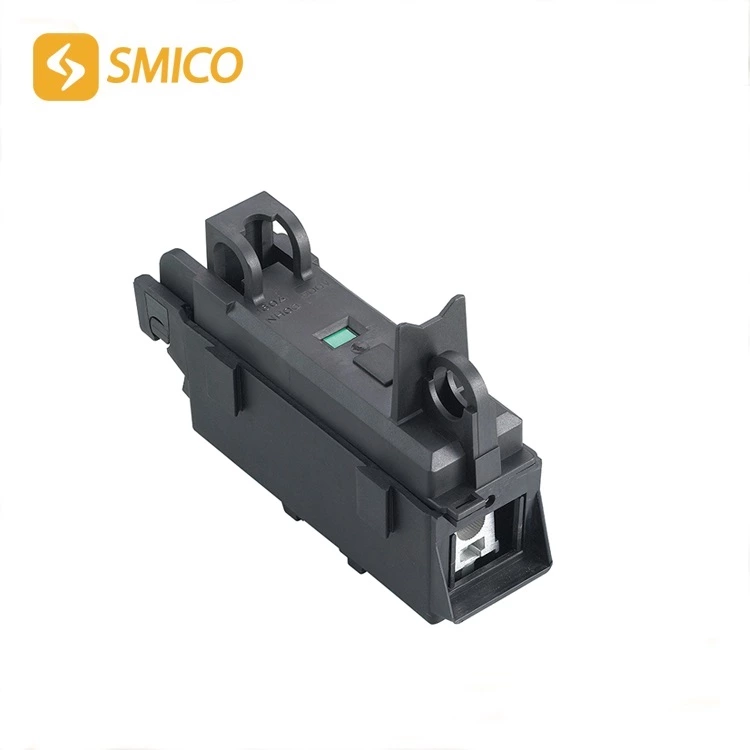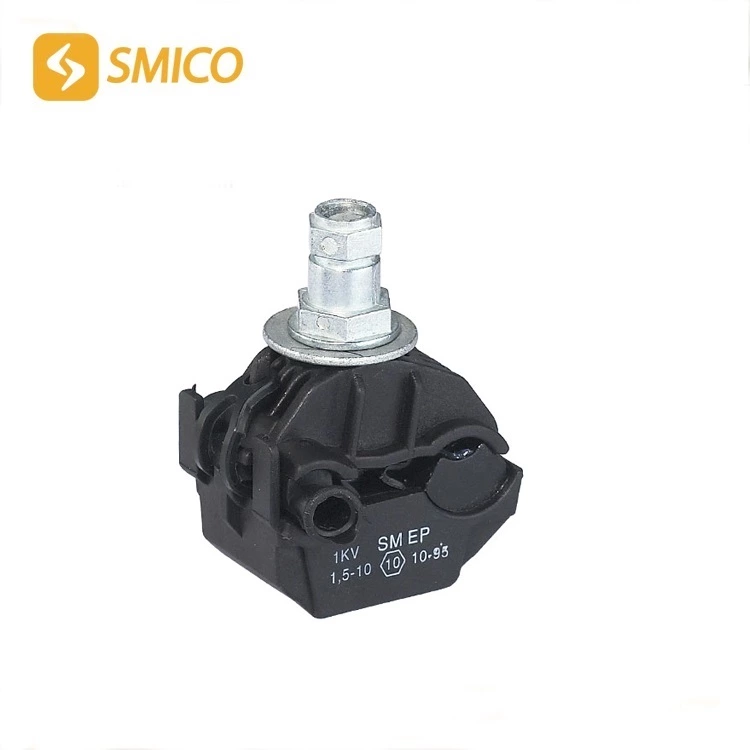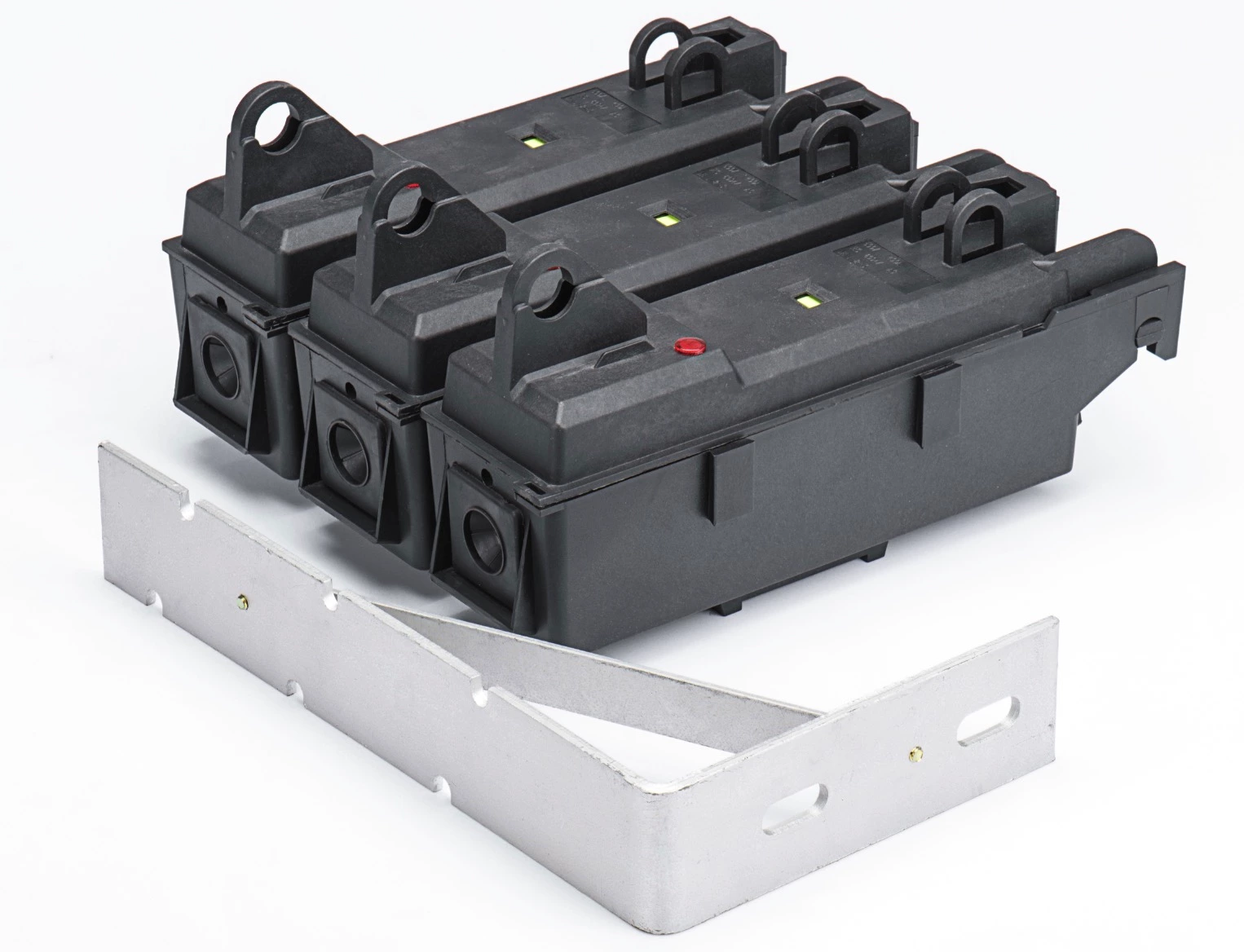Insulators Composite Insulator High Voltage Line Post
- Standard:
- IEC61109, ANSI, GB
- Supply Ability:
- 100000/Month
- Color:
- Gray or customized
- Certification:
- Test report
Insulators Composite Insulator High Voltage Line Post
SMICO offer different kinds of composite insulator for substation. Contact us get more details about composite insulator, such as TDS, Application Method, OEM etc.
SMICO can supply different type of composite silicone insulator, also customer required.
Composite insulators are a special type of insulation control that can play an important role in overhead transmission lines.
Composite insulators are also known as synthetic insulators, non-porcelain insulators, polymer insulators, rubber insulators, etc. The main structure is generally composed of a shed skirt, a FRP core rod and an end fitting. The shed skirt is generally made of organic synthetic materials, such as ethylene propylene rubber, high temperature vulcanized silicone rubber, etc.; FRP mandrels are generally made of glass fiber as a reinforcing material, and a oxidizing resin as a base material; The end fittings are generally carbon steel or carbon structural steel coated with hot zinc-aluminum.
Classification of Silicone Rubber Insulators
Composite insulators can be divided into: line composite insulators and power stations, electrical composite insulators. It can also be divided into rod-shaped suspension composite insulators, pin-type composite insulators, cross-arm composite insulators, pillar composite insulators, wind-proof partial composite insulators, composite post insulator and so on.
Advantages of Composite Silicone Insulator
Small size, easy to maintain;
Light weight, easy to install;
High mechanical strength, not easy to break;
Excellent seismic performance and good stain resistance;
Fast production cycle and high quality stability.
End Fitting Structure
Composite insulators vary in their structure depending on the characteristics of use. In addition to meeting the tensile strength, meeting the requirements, and reliably connecting with the mandrel, the design of the metal tip also needs to meet the special requirements for application under high voltage. Composite insulators are generally made in the shape of a rod with a small capacitance. Therefore, the voltage distribution on the surface of the insulator is very uneven. Thus, in normal operation, the generated corona will be harmful, so it is necessary to use a pressure equalization measure. In addition, the synthetic insulating material cannot withstand an electric arc of several tens of kiloamperes. In the event of a short circuit fault, it will burn the umbrella near the wire and the tower, so arcing is required. At home and abroad, the method of adding a pressure equalizing ring is generally adopted to uniform the end electric field, weaken the corona, and lead to the fault arc.
The voltage equalizing ring of the composite insulator is a component of the composite insulator. Its function is to control the electric field strength inside the insulator, avoid internal partial discharge, reduce the local electric field strength of the external surface, especially the surface of the metal connecting part, and reduce the radio interference. Leading the power frequency arc to avoid burning the surface of the insulator and minimizing the local electric field strength near the end surface to improve its anti-smudge performance.
| Main Technical Parameter | |||||||
| Model | Specified Mechanical load(KN) | Spacing H (mm) | Arcing distance (>mm)) | Minimum Creepage distance | Lightning impulse Withstand voltage (>=KVp) | Wet power frequency withstand voltage (>=KVr.m.s.) | Factory model |
| CS70XZ-100/465 | 70 | 360 | 215 | 480 | 100 | 50 | FXBW-15/70 |
| CS120XZ-100/465 | 120 | 400 | 215 | 480 | 100 | 50 | FXBW-15/120 |
| CS70XZ-120/450 | 70 | 413 | 275 | 544 | 120 | 60 | FXBW-17.5/70 |
| CS120XZ-120/450 | 120 | 513 | 275 | 544 | 120 | 60 | FXBW-17.5/120 |
| CS70XZ-125/480 | 70 | 461 | 320 | 550 | 125 | 70 | FXBW-24/70(20mm/ KV) |
| CS120XZ-125/480 | 120 | 490 | 320 | 550 | 125 | 70 | FXBW- 24/120(20mm/KV) |
| CS70XZ-145/745 | 70 | 500 | 355 | 750 | 145 | 80 | FXBW-24/70(31mm/ KV) |
| CS120XZ-145/745 | 120 | 529 | 355 | 750 | 145 | 80 | FXBW- 24/120(31mm/KV) |
| CS70XZ-185/900 | 70 | 541 | 400 | 900 | 185 | 95 | FXBW-36/70 |
| CS120XZ-185/900 | 120 | 570 | 400 | 900 | 185 | 95 | FXBW-36/70 |
| CS70XZ-230/1120 | 70 | 610 | 455 | 1250 | 230 | 105 | FXBW-36/70(31mm/ KV) |
| CS120XZ-230/1120 | 120 | 650 | 455 | 1250 | 230 | 105 | FXBW- 36/120(31mm/KV) |
| CS70XZ-325/1815 | 70 | 860 | 710 | 2210 | 325 | 150 | FXBW-72.5/70 |
| CS120XZ-325/1815 | 120 | 900 | 710 | 2210 | 325 | 150 | FXBW-72.5/120 |
| CS70XZ-550/3150 | 70 | 1220 | 1055 | 3400 | 550 | 230 | FXBW-126/70 |
| CS120XZ-550/3150 | 120 | 1255 | 1055 | 3400 | 550 | 230 | FXBW-126/120 |
| CS120XZ-650/3625 | 120 | 1475 | 1270 | 4100 | 650 | 275 | FXBW-145/70 |
| CS210XZ-650/3625 | 160 | 1654 | 1485 | 4495 | 650 | 250 | FXBW-145/160 |
| CS120XZ-1050/6300 | 210 | 2550 | 2300 | 8500 | 1050 | 460 | FXBW-245/210 |
| CS160XZ-1050/6300 | 160 | 2430 | 2200 | 7000 | 1050 | 400 | FXBW-252/160 |
| CS120XZ-1425/9075 | 120 | 3180 | 2780 | 9880 | 1425 | 570 | FXBW-363/120 |
| CS210XZ-1425/9075 | 210 | 3440 | 3000 | 10450 | 1425 | 570 | FXBW-363/210 |
| CS120XZ-2250/13750 | 120 | 4450 | 4050 | 14100 | 2250 | 740 | FXBW-550/120 |
| CS210XZ-2250/13750 | 210 | 4450 | 4050 | 13850 | 2250 | 740 | FXBW-550/210 |
Why do Insulators use Silicone Rubber?
Beginning in the second half of the nineteenth century, when erecting transmission lines, the only insulating materials suitable for high voltages were ceramics and glass. In the 1940s, due to the advent of polymer materials, ceramics and glass were no longer the preferred insulator materials. European and American countries began to study polymer insulators. Afterward, the physical properties, electrical properties, long-term reliability, and optimal shape of electrical insulators were studied, and the productivity was continuously improved.
Among the polymer materials that can replace ceramics and glass, silicone rubber has had practical performance since the 1960s and has stood out among several polymers. Silicone rubber insulators have more advantages than ceramic insulators. First of all, it is light in weight, easy to operate, and safe; in addition, ceramic insulators often suffer from cracking, and it will be damaged by an impact. Silicone rubber insulators can resist mechanical shocks such as vehicles colliding with telephone poles.
Although other polymer materials also have the advantages described above, only silicone rubber will not cause too much pollution to the environment. The polymer insulator is waterproof, so there will be no leakage and surface arc phenomenon caused by the falling of water droplets. The water-resistance of China silicon rubber insulator recover faster than other polymer insulators, and it is a durable material that can be used for a long time in harsh environments.
1.Features of silicone rubber
Heat and cold resistance
Since silicone rubber has high bond energy and good chemical stability, its heat resistance is better than that of organic polymers. Furthermore, since the intermolecular interaction force is weak, the glass transition temperature is low and the cold resistance is good. Therefore, its characteristics will not change when used in any area on the earth.
Waterproof
Since the surface of polysiloxane is a methyl group, it is hydrophobic and can be used for waterproofing.
Electrical performance
The number of carbon atoms in the silicone rubber molecule is less than that of organic polymers, so its arc resistance and leakage resistance are very good. In addition, even if burned, insulating silicon is formed, so it has excellent electrical insulation.
Permanent deformation
The permanent set characteristics (permanent elongation and compression set) of silicone rubber at room temperature/high temperature are better than those of organic polymers.
2.Classification of silicone rubber
According to the characteristics before vulcanization, silicone rubber can be divided into two types: solid and liquid. According to the vulcanization mechanism, it can also be divided into three types: peroxide vulcanization, addition reaction vulcanization, and condensation reaction vulcanization. The difference between solid and liquid silicone rubber is the molecular weight of polysiloxane. Solid silicone rubber can be vulcanized by anyone of peroxide vulcanization and addition reaction, usually called high temperature vulcanized rubber (HTV) and heat vulcanized rubber (HCR). Although the liquid silicone rubber material vulcanized by addition reaction can be vulcanized at room temperature, it is called liquid silicone rubber (LSR), low temperature vulcanized rubber (LTV) and two-component room temperature vulcanized rubber (RTV) due to the different molding methods and vulcanization temperatures. ).
We are composite insulators manufacturer. Please feel free to contact us.

